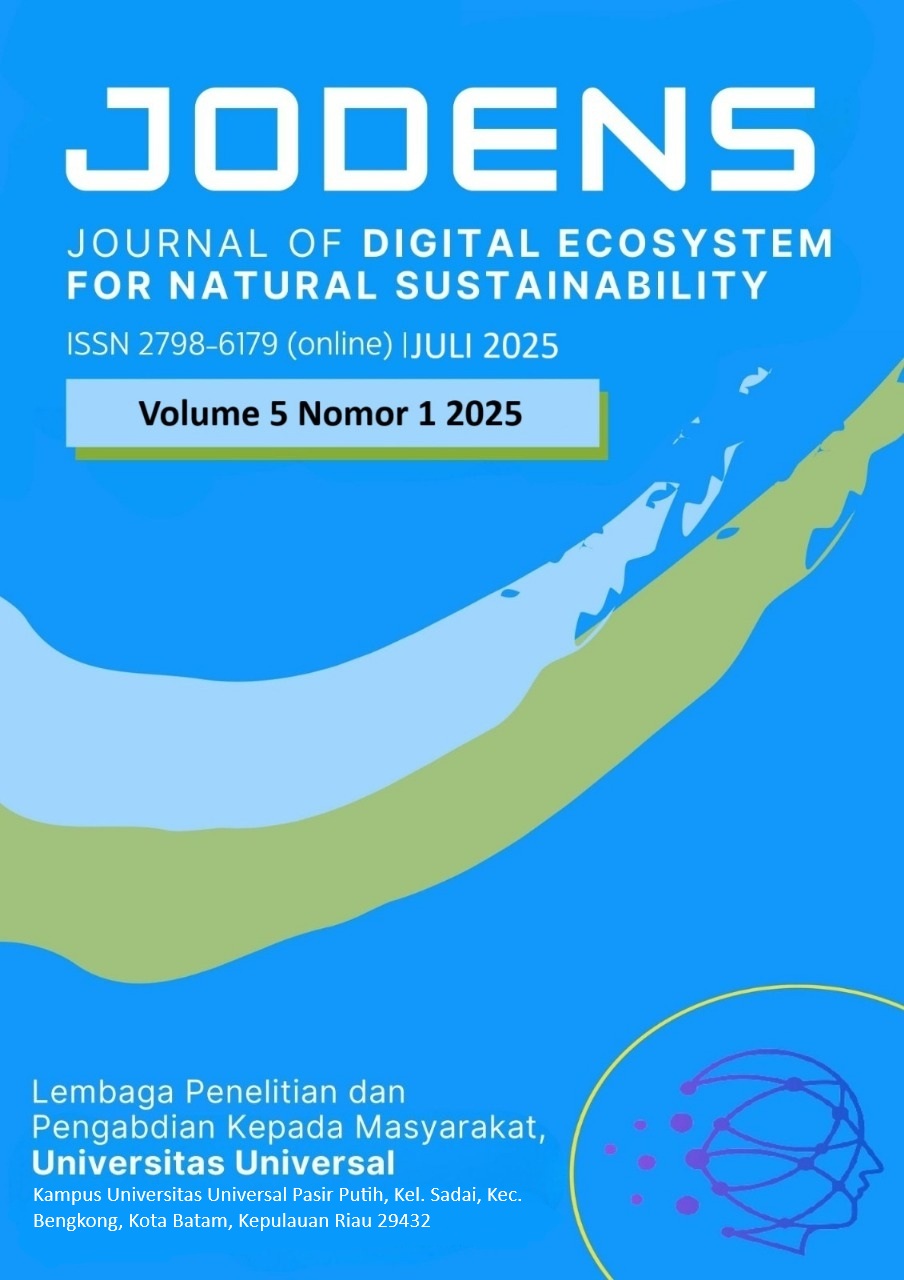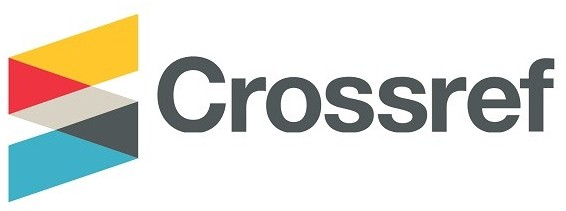Smart Trash Can Berbasis IOT Dan Mikrokontroler: Solusi Cerdas Untuk Pengelolaan Sampah
##plugins.pubIds.doi.readerDisplayName##:
https://doi.org/10.63643/jodens.v5i1.295关键词:
Smart Trash Can, Internet of Things (IoT), Microcontroller, Waste Management, Ultrasonic Sensor摘要
Efficient and effective waste management is crucial for maintaining cleanliness and environmental health, especially in school environments. This research aims to develop and implement a Smart Trash Can system based on the Internet of Things (IoT) and microcontroller as an intelligent solution for waste management at Building B of the Maitreyawira Foundation in Batam. The system is designed to detect the fill level of trash bins in real-time and send notifications to the management center via the IoT network. The Smart Trash Can utilizes ultrasonic sensors to measure the volume of waste and an ESP32 microcontroller to process the data. Information regarding the fill status of the trash bins is transmitted through wireless communication modules to a central server integrated with a web-based application, allowing the building management to monitor and manage waste more efficiently. Test results based on blackbox testing tables show that this prototype functions well, with a detection accuracy rate of 95%. The system can provide accurate information about the fill level of the trash bins and reduce manual checking frequency by up to 80%, thus enhancing the operational efficiency of waste management at Building B of the Maitreyawira Foundation. With the implementation of this technology, it is expected to improve environmental cleanliness and make a positive contribution to better waste management in urban areas.
参考
A. S. Rahmatullah, E. Mulyasa, S. Syahrani, F. Pongpalilu, and R. E. Putri, “Digital era 4.0,” Linguistics and Culture Review, vol. 6, pp. 89–107, Jan. 2022, doi: 10.21744/lingcure.v6ns3.2064.
M. Ryalat, H. ElMoaqet, and M. AlFaouri, “Design of a Smart Factory Based on Cyber-Physical Systems and Internet of Things towards Industry 4.0,” Applied Sciences (Switzerland), vol. 13, no. 4, Feb. 2023, doi: 10.3390/app13042156.
T. Batool et al., “Intelligent model of ecosystem for smart cities using artificial neural networks,” Intelligent Automation and Soft Computing, vol. 30, no. 2, pp. 513–525, 2021, doi: 10.32604/iasc.2021.018770.
K. Y. Sun, Y. Pernando, and M. I. Safari, “Perancangan Sistem IoT pada Smart Door Lock Menggunakan Aplikasi BLYNK,” JUTSI (Jurnal Teknologi dan Sistem Informasi), vol. 1, no. 3, pp. 289–296, 2021, doi: 10.33330/jutsi.v1i3.1360.
Y. R. Yonky Pernando, “Perancangan Prototype Kapal Untuk Monitoring Sensor Ultrasonik,” Journal Sensi, vol. 09, no. 02, 2022.
K. Wójcicki, M. Biegańska, B. Paliwoda, and J. Górna, “Internet of Things in Industry: Research Profiling, Application, Challenges and Opportunities—A Review,” Mar. 01, 2022, MDPI. doi: 10.3390/en15051806.
K. O. M. Salih, T. A. Rashid, D. Radovanovic, and N. Bacanin, “A Comprehensive Survey on the Internet of Things with the Industrial Marketplace,” Feb. 01, 2022, MDPI. doi: 10.3390/s22030730.
S. Hossain, H. Anzum, and S. Akhter, “Comparison of YOLO (V3, V5) and MobileNet-SSD (V1, V2) for Person Identification Using Ear-Biometrics,” … Journal of Computing and …, 2024, [Online]. Available: https://journal.uob.edu.bh/handle/123456789/5144
T. Nasional SINTA and M. Zulfan Hakim, “Pengelolaan dan Pengendalian Sampah Plastik Berwawasan Lingkungan,” Amanna Gappa, vol. 27, no. 2, 2019, [Online]. Available: https://internasional.kompas.com/read/2018/11/21/18465601/sampah-plastik-dunia-dalam-angka,
A. Agung and A. Sutraningrum, “ORGANIC TRASH MANAGEMENT TOURISM ACCOMMODATION AT MAIMAGOT ORGANIC FARM IN ABIANBASE VILLAGE, BERKATAN, BADUNG REGENCY TITLE IN ENGLISH HERE.” [Online]. Available: http://ojs.uhnsugriwa.ac.id/index.php/ride
A. Sugih, M. Huda, T. A. Zuraiyah, and F. L. Hakim, “Prototype Alat Pengukur Jarak Dan Sudut Kemiringan Digital Menggunakan Sensor Ultrasonik Dan Accelerometer Berbasis Arduino Nano,” Bina Insani Ict Journal, vol. 6, no. 2, pp. 185–194, 2019.
I. W. A. W. K. Heru Purwanto, Malik Riyadi, Destiana Windi Widi Astuti, “Komparasi Sensor Ultrasonik HC-SR04 Dan JSN-SR04T Untuk Apikasi Sistem Deteksi Ketinggian Air,” Jurnal SIMETRIS, vol. 10, no. 2, pp. 717–724, 2019.
A. Buana Surabaya and A. Nur Rifky, “Iot-Based Smart Trash Monitoring Using Blynk Application,” vol. 03, no. 2, p. 2021.
Y. Hirmawan, E. Riyanto, and D. Solikhin, “Membangun Sistem Smart Trash Menggunakan Mikrokontroler Motor Servo Panjerino.”
M. Malik and A. Prasetyo, Design a Smart Trash Using Fuzzy Logic Algorithm. 2022.
H. Muhammad Rifai, H. Hafsah, R. Mulyati, and F. Eka Putri, “Rancang Bangun Pembuatan Smart Trash Bin Berbasis Arduino Uno,” 2023.
A. Wuryanto, N. Hidayatun, M. Rosmiati, and Y. Maysaroh, “Perancangan Sistem Tempat Sampah Pintar Dengan Sensor HCRSF04 Berbasis Arduino UNO R3,” vol. 21, no. 1, pp. 55–60, 2019, doi: 10.31294/p.v20i2.
R. M. Aqilah, A. Sahirah Elfahmi, R. Fariza, R. Dwi Oktalia, and B. T. Wahyudi, “Smart Trash Can: Innovation of Automatic Trash Can with Arduino Uno-Based as an Effort to Support Global Sustainable Development Goals (SDGs) Action,” 2021.
##submission.downloads##
已出版
##submission.howToCite##
期
栏目
##submission.license##
##submission.copyrightStatement##
##submission.license.cc.by4.footer##















